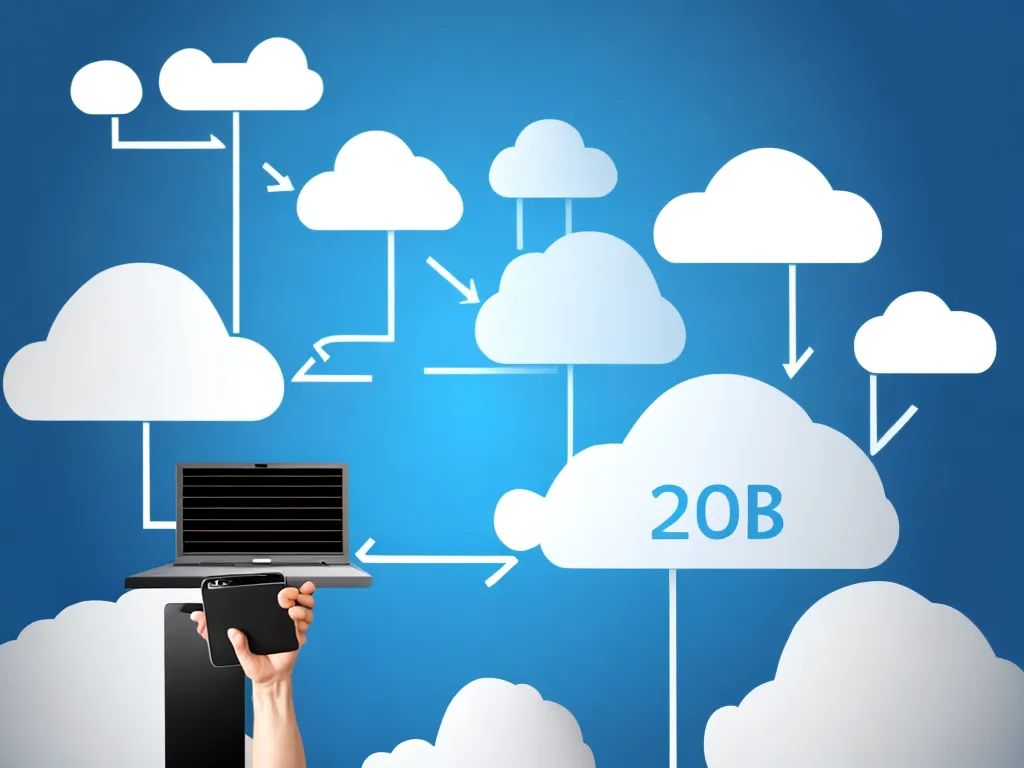
Introduction
Data backup is an essential part of any business or personal computing strategy. As we rely more on digital files and information, having a robust backup solution provides peace of mind in case of hardware failure, ransomware, or accidental deletion. In 2024, two main options exist for backing up data: cloud-based backup and local on-premises backup. Each approach has advantages and disadvantages to consider when deciding which method is the best fit for your needs. This article examines the key differences between cloud backup and local backup to help you determine the better choice in 2024.
Overview of Cloud Backup
Cloud backup refers to backing up data to remote servers operated by a third-party cloud storage provider. Instead of storing copies of files locally, your data is transmitted and stored on servers owned by a service like Carbonite, Backblaze, IDrive, or Microsoft OneDrive.
Advantages of Cloud Backup
-
Offsite protection against local disasters – If a fire, flood, or ransomware attack damages on-premises storage, your cloud backup remains intact and accessible from any web-enabled device. This geographic redundancy keeps data safe.
-
Automatic and continuous backups – Once configured, cloud backup services run automatically in the background without requiring ongoing user intervention. New and changed files are continuously backed up.
-
Accessibility and sharing – Cloud backup data can be accessed from anywhere with an internet connection. Cloud services also facilitate sharing large files and collaborating across teams and locations.
-
Managed infrastructure – You avoid the cost and complexity of maintaining your own backup infrastructure. The service provider manages the hardware, software, and network resources.
Disadvantages of Cloud Backup
-
Upload bandwidth limits – Initial full backups can take days or weeks to complete as data is slowly uploaded. Backup and restore operations are limited by your available internet bandwidth.
-
Storage costs – While low-cost options exist, most cloud providers charge escalating fees based on how much storage you use. Large amounts of data get expensive.
-
Security and privacy risks – Your data resides within the cloud provider’s infrastructure, which exposes it to potential data breaches. You cede control over data access policies.
-
Dependency on provider – If the service experiences an outage, you may lose access to your data. Exiting a service may be difficult if incompatible backup formats are used.
Overview of Local On-Premises Backup
Local on-premises backups involve copying important files and folders to storage media located nearby the originating source systems. Traditionally this was done using external hard drives, tape cartridges, or networked attached storage (NAS), but some modern options include:
- External USB drives
- CD/DVDs
- Network shared folders
- Dedicated NAS appliances like Synology, QNAP, Netgear
- On-premises private cloud storage
Advantages of Local Backup
-
Faster backup and recovery speeds – With storage directly attached to your local network, backup and restore operations complete quicker compared to cloud transfers. LAN speeds are higher than internet bandwidth.
-
Air gap from internet – Keeping data isolated from online access minimizes risks of remote cyber attacks like ransomware. Physical separation adds an extra security layer.
-
Complete data control – When you retain physical control of the storage, you define the access policies, encryption standards, and retention rules. Compliance and privacy are simplified.
-
Local resilience – Backup drives in the same facility as your servers give resilience against network or power grid failures. You can recover data even during internet outages.
Disadvantages of Local Backup
-
Physical proximity risks – Local backups provide no protection if a disaster like a fire, flood, or theft damages your facility. A second backup copy should be kept remotely.
-
Hardware management – You must budget for storage devices, servers, networking gear, electricity, and physical space to house local backups. Maintenance is ongoing.
-
Difficult to share – Accessing local backup copies from outside your network perimeter is not seamless. Sharing large files across sites can be challenging without cloud syncing.
-
Manual processes – Ensuring scheduled backups complete reliably requires manual checks. human intervention is eventually needed to swap tapes or manage disks.
Cloud vs. Local: What is Better for 2024?
Given the tradeoffs between local and cloud backup, most organizations use a hybrid approach to balance security, costs, and convenience. Here are some best practices for 2024:
-
Use cloud backup for key data that needs offsite protection or easy sharing. Prioritize portable files like documents and presentations.
-
Retain local on-premises backups for systems with high data change rates that would be costly to upload. Videos, image libraries, and VM images are good examples.
-
Replicate a subset of cloud data back to secondary local storage for faster recovery. This provides an onsite cache of critical cloud data.
-
Encrypt all backups, whether in the could or local. This guarantees security and privacy when backups reside outside your perimeter.
-
Test restores frequently to verify backups remain viable and current. This confirms your backup strategy works before you desperately need it.
-
Use backup monitoring to get notified of any failed jobs. Monitoring helps catch issues early.
-
Evaluate costs closely as storage needs scale up. Variable cloud costs and local hardware capacity should be budgeted.
Key Recommendations
For most use cases in 2024, a hybrid approach combining the best capabilities of both methods is recommended:
- Use cloud backup for offsite protection of critical data, remote access, and collaboration.
- Use local backup for faster onsite restores, air-gapped security, and high-volume systems.
- Encrypt all backup copies to guarantee privacy and security.
- Test restores frequently to verify recoverability.
- Monitor backup statuses to catch problems early.
- Carefully evaluate costs as storage needs grow over time.
Following these best practices helps balance the advantages of both approaches. Fitting the backup strategy to the specific use case with regular testing and monitoring lets you maximize robustness and minimize cost.












